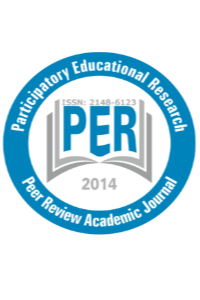
Participatory Educational Research
Yazarlar: Şakire ERBAY, Mustafa Naci KAYAOĞLU, Eylül ÖNAY
Konular:Eğitim, Bilimsel Disiplinler
DOI:10.17275/per.16.spi.1.6
Anahtar Kelimeler:Pronunciation,Learning strategies,ELT,Cognitive
Özet: As is clear in the related literature, pronunciation is a neglected area in English language education throughout the world, and thus the area needs to be investigated so that informed decisions regarding pronunciation teaching could be taken. Hence, the present qualitative case study was designed to find out the strategies employed by the preparatory English majors chosen via convenience sampling (n=56, 44 female and 12 male) in a middle-sized university in the north east part of Turkey. Inspired by Oxford’s Strategy Game, eleven problem-oriented vignettes applicable for EFL context were devised and piloted. The fabricated vignettes include ten different areas: natural pronunciation, difficult and long words, self-confidence, misunderstanding, sounds not existing in Turkish, tone, sounds existing in native and target language, IPA knowledge, and intonation. The vignettes were quantified and interpreted on the basis of Rokoszewska’s (2012) strategy taxonomy. The findings show that while cognitive metacognitive and memory strategies were frequently employed by the participants, social, compensation and affective ones were underused. The analysis also revealed that the participants used a wide variety of tactics in particularly cognitive strategies domain, including listening to tapes, music and watching TV/movie, pronouncing a difficult word over and over, memorising and practising target language sounds over and over, memorising and practising target language phrases, noticing mouth position or watching lips, practising listening, to list but a few. However, as language learning requires the development of not only cognitive and metacognitive but also emotional and interpersonal processes, it can be concluded that these underused strategies need to be promoted with strategy training and students’ awareness need to be increased. Thus, the portrayal of pronunciation strategy use is expected to help material developers to integrate pronunciation learning strategies into newly devised instructional materials. The results are also expected to help teachers to take informed decisions about the instructional steps they take in their classrooms and plan strategy training